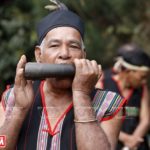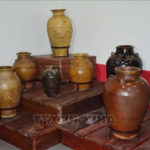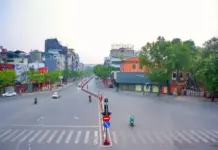Ethnic groups in the Central Highlands still have many elephant-related rituals and customs, including an annual ceremony to pray for elephants’ health.
The Ede people of Tri hamlet, Krong Na commune, Buon Don district organize the elephants’ prayer ceremony at Bay Rong wharf. Shaman Y Han Bkrong and his two assistants lead a procession of all villagers from the hamlet to the wharf. He holds a bottle of water and other villagers bring offerings.
At the wharf, under perennial tamarind trees, 7 elephants are dressed in colorful brocade fabric. Y Tang Rya of Krong Na commune said the Ede consider elephants to be close friends.
“The worship shows our respect for the elephants and prays for their health. When the shaman performs the ritual, he pours liquor and pig blood on the elephants to wish them good health, a good diet, and freedom from disease.”

The M’Nong consider their elephants to be part of the family and always treat them well. The health ceremony expresses their wish that the elephants remain healthy, and gentle, and bring good luck to the village. The ceremony is usually held after the harvest. The elephants are bathed, fed, and given a rest.
In the past families prepared pigs, liquor, and food for the ceremony. Today the commune organizes a ceremony for the elephants every two years. Y Ril Knul, head of Ea Mar hamlet, said the communal authority prepares the offering and assigns work to the villagers.
“The offering consists of rice, steamed rice, areca leaves, betel nuts, liquor, and a pig. We place the offering on the elephants’ heads so they will know the families are praying for their health,” he said.
The ceremony has three parts: a ritual for the ancestors, a ritual to pray for the elephants’ health, and a ritual to thank the deities. Between the rituals, they play gongs, hold each other’s hands and do Xoan dancing.
The shaman performs the rituals and reads the prayer for the elephants to stay healthy and helpful to the family and village. He then puts copper bracelets on the mahouts, gives them part of the offering, and wishes them good health to take care of and protect the elephants.
After the ceremony people continue to play gongs, drink liquor, and immerse themselves in the festive atmosphere. It’s not only an opportunity for elephant owners and mahouts to pay their respect to their elephants, but also an opportunity for the villagers to assemble to tighten community bonds and celebrate traditions.

Y Com H wing, head of the gong team of Krong Na commune, said, “I’m very happy to contribute to the ceremony. We have a lot of fun. The villagers honor the work of raising elephants.”
Dak Lak province works hard to maintain its elephant herd. Elephant-related activities and rituals are a new way to boost tourism.
Y Te Bkrong of Drang Phok hamlet said, “Society evolves but we cannot lose our cultural identity. We need to preserve and promote our customs and traditions. Krong Na commune and the Tourist Center help people organize festivals combined with tourism.”
The elephants’ health ceremony reminds people to treat elephants like family members, secure a future for elephants, and sustain the ecological integrity of the place where they live.
Che jars in the Ede’s life
The Ede ethnic minority people in the Central Highlands have developed rich cultural values, which are closely associated with terraced field cultivation.









